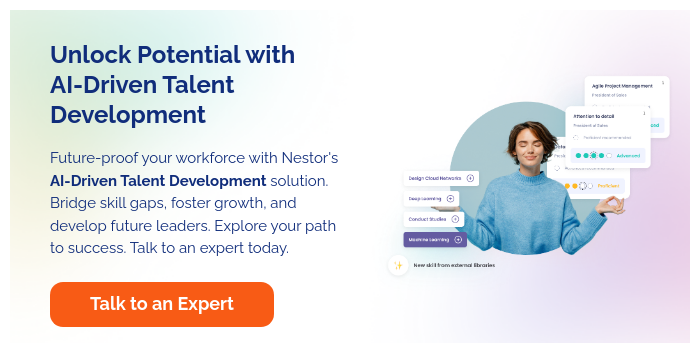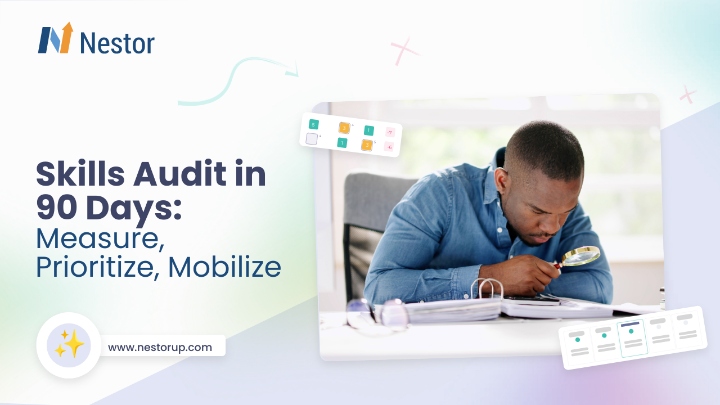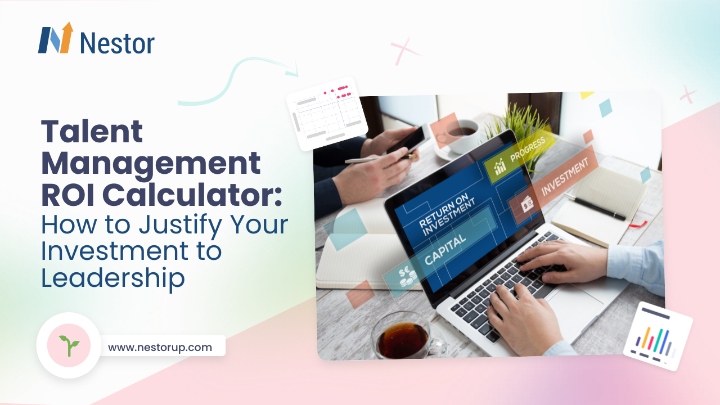
Have you ever considered what sets top-performing companies apart from the rest? It’s not just about innovative products or cutting-edge technology; it’s about investing in people. Organizations that prioritize employee growth and development consistently outperform those that don’t. One highly effective tool for fostering such growth is the individual development plan (IDP).
At its core, an individual development plan is designed to bridge the gap between where an employee is now and where they aspire to be in the future. By laying out specific goals, identifying necessary skills, and outlining actionable steps, individual development plans create a clear pathway for development. This proactive approach not only enhances employee satisfaction and engagement but also drives organizational success by ensuring that talent development is strategically aligned with business objectives.
Creating an effective individual development plan involves several key components. From setting clear, achievable goals to identifying the resources and support needed, each step is crucial. It’s not just about outlining a plan but also about fostering a culture of continuous feedback and improvement. Implementing IDPs requires commitment from both management and employees, and when done correctly, it can lead to remarkable transformations.
Whether you’re a seasoned HR professional looking to refine your talent development strategies or a business leader seeking to unlock your team’s full potential, this article offers a roadmap to leveraging IDPs for organizational excellence. We’ll cut through the jargon and provide practical, actionable advice that you can start implementing right away. Ready to discover how IDPs can revolutionize your approach to talent management?
What is an Individual Development Plan?
An individual development plan is a structured, collaborative process between an employee and their manager or organization. It serves as a personalized roadmap for professional growth and career advancement. One of the key characteristics of an individual development plan is its customized nature. Unlike one-size-fits-all training programs, IDPs are tailored to each individual’s unique strengths, weaknesses, aspirations, and learning style. This personalized approach makes IDPs particularly effective in addressing specific skill gaps and career goals. It’s important to note that an IDP is not a static document. Rather, it’s a living, breathing plan that evolves as the employee progresses in their career and as the organization’s needs change. Typically covering a period of 6 to 12 months, IDPs are regularly reviewed and updated to ensure their continued relevance and effectiveness.
The key components of an Individual Development Plan:
- Self-assessment
The foundation of any effective individual development plan is a thorough and honest self-assessment. This process involves the employee reflecting on their current professional state, including their skills, strengths, weaknesses, values, and interests. A comprehensive self-assessment typically includes a skills inventory, strengths analysis, identification of areas for improvement, work style preferences, values and motivators, and career interests.
To conduct this self-assessment, various tools can be employed, such as personality assessments, skills assessment tests, 360-degree feedback, and reflective exercises. The goal is to provide a clear, objective picture of the employee’s current professional standing, serving as a starting point for their development journey.
- Career goals and aspirations
With a clear understanding of their current state, the next step is for the employee to define where they want to go in their career. This involves setting both short-term and long-term career goals. These goals should be specific, aligned with personal values and interests, realistic yet challenging, and flexible enough to adapt to changing circumstances. They should also align with organizational objectives where possible.
Career goals might include short-term objectives to be achieved within 1-2 years, medium-term goals for the next 3-5 years, and long-term aspirations looking 5 or more years into the future. It’s important that these goals are documented in detail, including the reasoning behind each goal and how it fits into the larger picture of the employee’s career aspirations.
- Skill gap analysis
Once current skills and future goals are identified, the next crucial step is conducting a skill gap analysis. This process involves identifying the skills and competencies required to achieve the stated career goals, comparing these required skills with the employee’s current skill set, and prioritizing the skills that need to be developed.
This analysis might include technical skills specific to the employee’s field or desired role, soft skills such as leadership or communication, industry knowledge or certifications, and experiential requirements. The skill gap analysis should result in a prioritized list of development areas, focusing on those skills that will have the most significant impact on the employee’s ability to achieve their career goals.
- Action plan with specific, measurable objectives
The heart of the IDP is the action plan. This should outline specific, measurable steps the employee will take to close the identified skill gaps and move towards their career goals. An effective action plan includes specific development activities, clear and measurable objectives for each activity, methods for measuring progress and success, and potential obstacles and mitigation strategies.
Development activities could range from formal training programs and on-the-job learning experiences to stretch assignments, mentoring relationships, and self-directed learning. Each activity should have associated SMART (Specific, Measurable, Achievable, Relevant, Time-bound) objectives to ensure clear progress tracking.
- Timeline and milestones
A well-structured individual development plan should include a realistic timeline for achieving the outlined objectives. This timeline should break down long-term goals into shorter-term milestones, set deadlines for completing specific development activities, and allow for regular check-ins and progress reviews. It’s important that the timeline remains flexible enough to accommodate unexpected changes or opportunities.
- Resources and support
The IDP should clearly identify the resources and support needed to achieve the outlined goals. This might include budget for training courses or educational materials, time allocation for development activities, access to mentors or coaches, and necessary tools or technologies. By clearly outlining these needs, employees and managers can ensure that the necessary resources are available to support the development process.
- Flexibility and review process
Finally, the IDP should include provisions for regular review and adjustment. This includes scheduled review sessions to assess progress, processes for adjusting goals or timelines as needed, mechanisms for incorporating new opportunities or changing priorities, and plans for updating the IDP as short-term goals are achieved or circumstances change.
It’s crucial to understand that while IDPs are primarily focused on employee development, they also serve important organizational purposes. By aligning individual growth with company objectives, IDPs help create a more skilled, engaged, and adaptable workforce. They can be powerful tools for succession planning, helping organizations identify and prepare future leaders.
However, the success of an IDP largely depends on the commitment of both the employee and the organization. Employees must take ownership of their development, actively pursuing the goals outlined in their IDP. At the same time, organizations must provide the necessary support, resources, and opportunities for employees to achieve these goals.
Benefits of Implementing an Individual Development Plan
The implementation of a robust individual development plan (IDP) program can yield numerous benefits for both employees and the organization as a whole. These benefits extend beyond simple skill development, touching on various aspects of organizational success, employee satisfaction, and business performance. Let’s delve deeper into these advantages:
- Improved Employee Performance and Productivity
When employees have a clear understanding of their career path and the skills they need to develop, they become more focused and motivated in their current roles. IDPs provide a structured approach to skill development, enabling employees to enhance their capabilities and perform their jobs more effectively.
For instance, a marketing coordinator might identify digital analytics as a key area for development in their IDP. As they work through their plan, attending workshops and gaining hands-on experience with analytics tools, they become more proficient at data-driven decision making. This newfound skill allows them to optimize marketing campaigns more effectively, leading to improved ROI on marketing spend.
Moreover, as employees acquire new skills and take on challenging assignments as part of their IDPs, they become more versatile and valuable to the organization. A customer service representative who develops project management skills through their IDP might be able to lead a customer experience improvement initiative, bringing insights from the front lines to drive meaningful change.
This increased capability often translates into higher productivity and improved business outcomes. Organizations with well-implemented IDP programs have reported productivity increases of up to 25% in employees actively engaged in their development plans.
- Enhanced Employee Engagement and Retention
One of the primary reasons employees leave organizations is the lack of career development opportunities. By implementing IDPs, companies demonstrate a commitment to their employees’ growth and future, which can significantly boost engagement and job satisfaction. When employees feel that their organization is invested in their development, they’re more likely to remain loyal and committed. Studies have shown that companies with strong learning cultures and development opportunities have 30-50% higher retention rates than their peers.
This increased retention can lead to substantial cost savings in recruitment and training, as well as the preservation of valuable institutional knowledge. Considering that the cost of replacing an employee can range from 50% to 200% of their annual salary, the financial impact of improved retention through IDPs can be significant.
- Alignment of Individual Goals with Organizational Objectives
IDPs provide a unique opportunity to align an employee’s personal career aspirations with the strategic goals of the organization. This alignment ensures that as employees develop their skills and advance in their careers, they’re simultaneously contributing to the company’s overall success.
For instance, if an organization is planning to expand its digital marketing efforts, it can encourage employees in relevant departments to include digital marketing skills in their IDPs. A content writer might focus on developing SEO expertise, while a graphic designer might prioritize learning about interactive content creation. As these employees develop these skills, they’re not only advancing their own careers but also directly contributing to the company’s strategic initiative.
This strategic alignment of individual and organizational goals creates a win-win situation for both parties. Employees feel that their development is meaningful and valued, while the organization benefits from a workforce that’s continually evolving to meet its changing needs.
- Fostering a Culture of Continuous Learning
By implementing IDPs, companies send a clear message that learning and development are valued and expected. This emphasis on continuous learning can create a culture where employees are constantly seeking to improve their skills and knowledge. Such a culture not only benefits individual employees but also enhances the organization’s overall adaptability and resilience in the face of change. Stats from Deloitte that show that:
Organizations with a strong learning culture are 92% more likely to develop novel products and processes, 52% more productive, 56% more likely to be the first to market with their products and services, and 17% more profitable than their peers.
— Deloitte
- Improved Succession Planning and Leadership Development
IDPs can play a crucial role in identifying and nurturing future leaders within the organization. By tracking the progress of employees through their IDPs, HR and senior leadership can identify high-potential individuals who are actively developing leadership skills.
For example, a finance analyst who consistently achieves the goals in their individual development plan, particularly those related to strategic thinking and team leadership, might be identified as a potential future Finance Director. The organization can then provide targeted development opportunities to prepare this individual for a leadership role. This approach to succession planning ensures a pipeline of internal talent ready to step into key roles as they become available, reducing the risks and costs associated with external hiring for leadership positions.
- Enhanced Employer Brand and Talent Attraction
Organizations known for their strong commitment to employee development often become employers of choice in their industries. A robust IDP program can be a powerful selling point in attracting top talent, particularly among millennials and Gen Z workers who place a high value on career development opportunities. The promise of supported, structured career development can be a key differentiator in a candidate’s decision-making process.
The benefits of implementing IDPs are far-reaching, impacting not just individual employee performance but the overall health and success of the organization. From improved productivity and retention to enhanced innovation and adaptability, IDPs can be a powerful tool for driving organizational success in today’s dynamic business environment. While implementing an effective IDP program requires investment and commitment, the potential returns in terms of employee engagement, skill development, and organizational performance make it a worthwhile endeavor for forward-thinking companies.
Best Practices for Implementing IDPs in Your Organization
Implementing an effective IDP program requires careful planning, strong commitment, and ongoing support. Here are detailed best practices to ensure the successful implementation of IDPs in your organization:
- Gaining Leadership Buy-in
The success of any individual development plan program starts at the top. Senior leadership must understand, champion, and actively participate in the IDP process. This involves more than just verbal support; it requires tangible actions and visible commitment. Start by educating leaders on the tangible benefits of IDPs. Present case studies from other organizations that have successfully implemented IDP programs, highlighting improvements in employee retention, engagement, and performance. Demonstrate how IDPs align with and support strategic business objectives, such as developing future leaders, improving innovation, or enhancing customer service.
Encourage leaders to participate in their own IDPs, setting an example for the rest of the organization. This could involve senior executives sharing their personal development goals and experiences during town hall meetings or internal communications. Consider implementing a “reverse mentoring” program where junior employees mentor senior leaders on emerging technologies or trends, demonstrating the organization’s commitment to learning at all levels. - Providing Necessary Resources and Support
For IDPs to be effective, employees need access to the right resources and support. This goes beyond just allocating a budget for training courses. Develop a comprehensive learning ecosystem that supports various learning styles and development needs. To support the IDP program, organizations should provide a comprehensive suite of resources and support systems. This might include a robust Learning Management System (LMS) with a wide range of online courses and resources, partnerships with external training providers or educational institutions for specialized training, and an internal knowledge-sharing platform where employees can create and share content.
Additionally, allocating a dedicated budget for each employee’s development activities, with clear guidelines on how it can be used, and providing protected time for learning activities, such as a specific number of hours per month dedicated to development, can further enhance the program’s effectiveness. Implementing a mentoring program that matches employees with more experienced colleagues and providing access to industry conferences, webinars, and professional associations can also contribute significantly to employees’ professional growth and the overall success of the IDP program. - Integrating IDPs with Performance Management Systems
To maximize their impact, IDPs should be seamlessly integrated with existing performance management processes. This integration ensures that development is seen as an integral part of an employee’s role and performance, not an optional add-on.
Revise performance review templates to include specific sections on development goals and progress. Train managers to discuss IDP progress during regular performance conversations, not just annual reviews. Consider implementing quarterly “development check-ins” focused solely on learning and growth. Align your promotion and succession planning processes with IDP achievements. For example, when considering candidates for leadership roles, explicitly evaluate their commitment to personal development and their track record of achieving IDP goals. - Encouraging Employee Ownership of Their Development
While managers and HR play important roles in the IDP process, ultimate ownership should lie with the employee. You can foster this sense of ownership through various means. First of all, implement a self-service portal where employees can access learning resources, track their progress, and update their IDPs. This gives employees more control over their development journey.
Recognize and reward proactive development efforts. This could be through formal award programs, such as a “Learner of the Month” recognition, or by highlighting employee development success stories in company newsletters or meetings. Incorporate questions about personal development into your hiring process, signaling from the start that continuous learning is an expectation in your organization. Lastly, encourage employees to form “learning circles” or study groups around common development goals. This peer-to-peer learning approach can increase engagement and accountability. - Regular Review and Adaptation
IDPs should be living documents, regularly reviewed and updated. Implement a structured review process to ensure this happens consistently across the organization. Schedule quarterly IDP check-ins between employees and managers. These should be separate from performance reviews, focusing solely on development progress and challenges. Encourage employees to update their IDPs as they achieve goals or as circumstances change. This might involve creating a “version history” for each IDP, allowing both employees and managers to track how development plans evolve over time. Develop a standard template for these check-ins, including questions like:- What progress have you made on your development goals since our last meeting?
- What challenges have you encountered, and how can we address them?
- Have your career goals or interests shifted? How should we adjust your IDP to reflect this?
- What new opportunities or resources have you identified that could support your development?
- Leveraging Technology
While IDPs are fundamentally about human development, technology can significantly enhance the IDP process. One standout solution in this space is Nestor, a skills-based talent management platform designed to revolutionize how organizations approach employee development and workforce planning. Nestor offers a comprehensive suite of tools that align perfectly with the needs of a robust IDP program:
- Skills Visibility and Mapping: Nestor provides unprecedented visibility into your workforce’s capabilities with a market library of over 20,000 skills, enhanced by AI-powered skill suggestions. This feature allows organizations to dynamically map their employees’ skills, providing a clear picture of current capabilities and potential skill gaps.
- Personalized Learning Recommendations: The platform offers tailored learning recommendations to help employees develop the skills they need to achieve their career goals and meet organizational objectives. This aligns perfectly with the core purpose of IDPs, ensuring that development activities are targeted and relevant.
- Talent and Opportunity Marketplace: Nestor’s marketplace feature connects employees with gigs, projects, or new open roles based on AI smart-matching. This not only provides development opportunities for employees but also ensures that the organization is making the best use of its talent, placing the right people with the right skills in the right places at the right time.
- AI-Driven Insights: Nestor’s AI capabilities can provide valuable insights for both employees and managers in the IDP process, suggesting skill development paths that align with individual career aspirations and organizational needs.
By leveraging technology solutions like Nestor, organizations can significantly enhance the effectiveness of their IDP programs. These tools provide the data-driven insights, personalized recommendations, and strategic alignment necessary to drive meaningful employee development and organizational growth. By implementing these best practices, organizations can create a robust, effective IDP program that drives employee growth, enhances engagement, and contributes to overall organizational success. Remember, implementing IDPs is not a one-time event, but an ongoing process of learning, adaptation, and improvement.
Measuring the Success of Your Individual Development Plan Program
Implementing an individual development plan (IDP) program is just the first step. To ensure its effectiveness and demonstrate its value to the organization, it’s crucial to establish a comprehensive system for measuring its success. This involves a multi-faceted approach that considers both quantitative metrics and qualitative feedback. Let’s delve into the various aspects of measuring the success of your IDP program:
1. Establishing Key Performance Indicators (KPIs)
To effectively measure the impact of your IDP program, it’s essential to establish specific, measurable KPIs. These indicators should align with both the goals of the IDP program and broader organizational objectives. Here are some KPIs to consider:
- Employee Engagement Scores: Regularly conduct employee engagement surveys and track changes over time. Look for improvements in areas related to career development, job satisfaction, and commitment to the organization. For example, you might see an increase in positive responses to statements like “I have opportunities for professional growth in this organization” or “My manager supports my career development.”
- Retention Rates: Monitor employee turnover, particularly among high-potential employees and those who have actively participated in the individual development plan program. Compare retention rates between employees with and without IDPs. You might set a goal to increase retention of high-potential employees by 15% within the first year of implementing the IDP program.
- Internal Promotion Rates: Track the percentage of open positions filled by internal candidates, especially those who have been actively working on their IDPs. This can demonstrate the program’s effectiveness in preparing employees for career advancement. Aim for a specific increase, such as filling 60% of management positions internally within two years of program implementation.
- Time to Proficiency in New Roles: For employees who have been promoted or moved to new roles, measure how quickly they become fully productive. Compare this to historical data or industry benchmarks. You might target a 20% reduction in time to proficiency for employees who have completed IDPs.
- Skill Acquisition Rates: Measure the rate at which employees are acquiring new skills or improving existing ones as outlined in their IDPs. This could be tracked through certifications earned, project completions, or manager assessments. Set specific targets, such as 80% of employees mastering at least one new skill per year as part of their IDP.
- Return on Investment (ROI): Calculate the financial impact of the IDP program by comparing the costs (e.g., training expenses, time invested) against the benefits (e.g., increased productivity, reduced turnover costs). While this can be challenging to quantify precisely, even rough estimates can be valuable.
2. Gathering and Analyzing Feedback
While quantitative metrics are important, qualitative feedback provides crucial context and insights. Implement a comprehensive feedback system that includes:
- Employee Surveys: Conduct regular surveys specifically focused on the IDP program. Ask employees about their satisfaction with the process, the support they’re receiving, and the impact on their career development. Include both closed-ended questions for easy quantification (e.g., “On a scale of 1-10, how valuable do you find your IDP?”) and open-ended questions for richer insights.
- Manager Feedback: Regularly collect feedback from managers on the impact of IDPs on their team’s performance and development. This could include questions about improvements in specific skills, readiness for promotion, and overall team productivity.
- Focus Groups: Organize focus groups with a diverse range of employees to gather in-depth feedback on the IDP program. These sessions can uncover nuanced insights that might not emerge from surveys alone. For example, you might discover that while employees value the IDP process, they struggle to find time to work on their development goals amidst daily responsibilities.
- Success Stories: Collect and document success stories from employees who have achieved significant career growth through their IDPs. These narratives can provide powerful qualitative evidence of the program’s impact and serve as motivation for other employees.
3. Assessing Skill Development
One of the primary goals of IDPs is to facilitate skill development. Implement systems to measure actual skill growth:
- Pre- and Post-Assessments: For specific training programs or development activities, conduct assessments before and after to measure skill improvement. This could involve standardized tests, practical demonstrations, or manager evaluations.
- Skill Proficiency Tracking: Implement a system for tracking employee skill proficiency levels over time. This could be a simple 1-5 scale for various skills relevant to each role or department. Set targets for improvement, such as employees increasing their proficiency by at least one level in targeted skills each year.
- Certification and Qualification Tracking: Monitor the number of relevant certifications or qualifications achieved by employees as part of their IDPs. Set organizational targets, such as increasing the number of employees with specific certifications by 25% annually.
4. Evaluating Business Impact
Ultimately, the success of your IDP program should be reflected in improved business outcomes. While direct causation can be difficult to prove, look for correlations between IDP implementation and:
- Productivity Metrics: Track department or team productivity metrics before and after IDP implementation. This could include measures like output per employee, project completion times, or sales per representative.
- Customer Satisfaction Scores: Monitor changes in customer satisfaction scores, particularly in areas that might be influenced by employee skill development (e.g., customer service quality, product knowledge).
- Financial Performance: While many factors influence financial performance, look for positive trends in key financial metrics following the implementation of the IDP program. This could include revenue growth, profit margins, or cost savings from increased efficiency.
Final Thoughts
In an era where talent is a key differentiator, individual development plans have become an indispensable tool for organizations seeking to attract, develop, and retain top talent. By providing a structured approach to employee development, IDPs not only benefit individual employees but also contribute significantly to organizational success.
Implementing an effective IDP program requires commitment, resources, and ongoing effort. However, the potential returns – in terms of improved performance, increased engagement, and a more skilled and adaptable workforce – make it a worthwhile investment for organizations of all sizes and across all industries.
As we move forward in an increasingly complex and rapidly changing business landscape, the organizations that prioritize employee development through tools like IDPs will be best positioned to thrive. It’s time for businesses to embrace IDPs not just as a human resources initiative, but as a fundamental strategy for driving innovation, adaptability, and sustainable growth.











